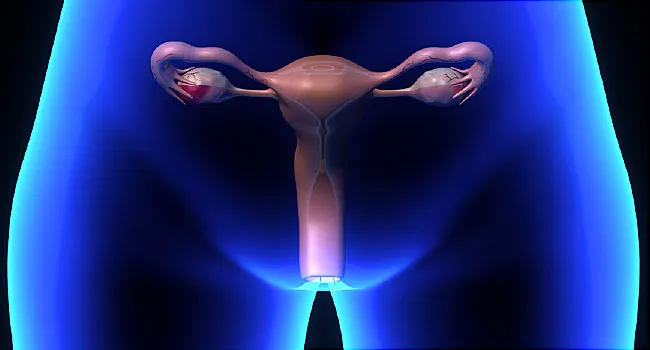CT Prisoners Were Promised Changes, Then Shackles Returned
In Connecticut, a supermax prison closed last month following documented harmful practices. But, when inmates were recently transfered to new facilities, they say the DOC behavior hasn't changed, and that shackle beds have returned. This comes as the debate over the use of shackles in solitary confinement continues in legislatures around the country.

In Connecticut, the supermax Northern Correctional Institution has now shut its doors for good, transferring inmates to new facilities around the state, hoping to close the chapter on Northern’s documented harmful practices against inmates. But instead of turning over a new leaf in different facilities, transferred prisoners say cell modifications are underway to resemble Northern all over again — particularly additions of “four-point restraint beds,” the CT Mirror details.
Richard Rice, a 52-year-old man transferred from Northern to MacDougall-Walker says he has a job cleaning hallways and empty cells in the new facility. Recently, changes have been undeniable that Rice says reminded him of the ones at Northern, including the restraint beds and new metal doors that lack slots.
“Them cells are just strictly for individuals that’s really out of control. They brought it here,” Rice explained to CT Mirror. “Basically, they’re taking Northern and bringing it here.”
Bed restraints and shackling in solitary confinement have long been a debated, with many re-examining the practice as akin to chaining up an animal as prisons use handcuffs, straitjackets, leg irons, belly chains, and other forms of physical restraints, according to the National Conference of State Legislatures (NCSL).
Leighton Johnson, a member of Stop Solitary CT, said he was placed in in-cell restraints after seeking medical treatment for chest pains while at Northern. He was stripped naked before seeing medical staff, then told he was fine. He asked the nurse how he could lower his blood pressure, but they were unwilling to help, telling him to leave.
Johnson said he was then chained up for three days, including when eating and using the toilet, at the Northern Correctional Institution before it was closed. He fears inmates who were transferred will be subjected to the same treatment, despite the DOC’s promises to change.
Similar to Johnson’s experience, for those who have been subjected to in-cell confinement, many are forced to eat off the floor and are unable to use the bathroom because they are tethered by chains. However, the people who are placed in restraints don’t always pose an imminent threat warranting restrictive treatment, CT Mirror details.
Inmates transferred out of Northern Correctional Institute detail that staff in their new facilities use “in-cell shackling” for “administrative segregation” or when someone is deemed a security risk.
Department of Corrections Commissioner Angel Quiros acknowledged the use of shackles in a recent interview, saying that once a threat is over, restraints are removed, according to the CT Mirror.
As advocates have argued against restraints, Quiros is now on the clock to reduce that form of confinement.
By October 1st, the department must report on the steps it has taken, and those it must still make, to decrease the use of in-cell restraints, CT Mirror details. By that date, Quiros must also change the department’s policies to limit the use of isolated confinement of members of “vulnerable populations to the greatest extent possible.” That includes people with serious mental health conditions, incarcerated pregnant women, and those under 18 or 65 or older.
Shackling and Solitary: A Debate
Connecticut is not the only state deep in the debate over shackling in solitary confinement, as many other states are actively working to seek change.
In Massachusetts, the Department of Correction is moving to end the use of solitary confinement in state-run facilities, a long-sought victory as countless reports have confirmed that restrictive housing is harmful to the inmates, according to the Boston Globe.
Erick Williams, a 45-years-old man released from prison eight years ago spoke with WBUR about the changes, saying he’s “ecstatic” about the change.
Also speaking with WBUR reporters, Williams detailed how he felt like a dog in a kennel while in solitary confinement — being shackled the entire time and cuffed while in the shower.
See Also: Colorado Bill Proposes Curbs on Use of Solitary in Jails
Even outside of incarceration facilities, shackles are used in public, mainly seen in court appearances.
South Carolina enacted legislation in 2014 that prohibits the use of restraints for juveniles appearing in court, unless the judge finds they are necessary to prevent harm and no less restrictive alternatives are available, according to the NCSL.
As shackling continues to be debated, advocates also point to areas where restraints are inappropriately used across the justice system.

Photo by Officer Bimbleberry via Wikipedia Commons
In North Carolina, House Bill 608 passed the House in early May, a bill that would end the common practice of shackling pregnant women behind bars. Today, in states across the country, birthing women are often heavily restrained with shackles while receiving any type of medical care at hospitals or health centers, as documented by North Carolina Health News.
Dr. Kerianne Crockett of Vidant Medical Center in Greenville, North Carolina recounts how a young woman had given birth on the way to the medical center, but the newborn died on the way. When the woman arrived, her ankle was cuffed to the side of the stretcher.
“Part of what was so terrible about her story is that she was restrained through the whole labor [and] delivery process,” said Crockett, an obstetrician-gynecologist, through tears. “All of my efforts to get the restraints removed once she was in my care – it took a lot of calls, and by the time the restraints were removed, the delivery was already done and a lot of the really sad things had already happened.”
As the Connecticut Department of Corrections continues to promise change following Northern Correctional Institution’s closing, advocates continue to share their stories to be heard, and to inspire change.
“Human beings need to interact with each other,” Johnson from Stop Solitary CT told CT Mirror. “You already stripped them of their freedom, society, their family and the will to do whatever they want. Then on top of that, you stripped them from social interactions, or you minimize it to an hour a day of walking around in a cage like an animal. How is that making society better?”
Additional Reading: The Trauma of Solitary: A Voice From the ‘Madhouse’
Andrea Cipriano is a TCR staff writer.

 Landwebs
Landwebs 



















/cdn.vox-cdn.com/uploads/chorus_asset/file/24430706/elon_musk_twitter_for_you.png)





